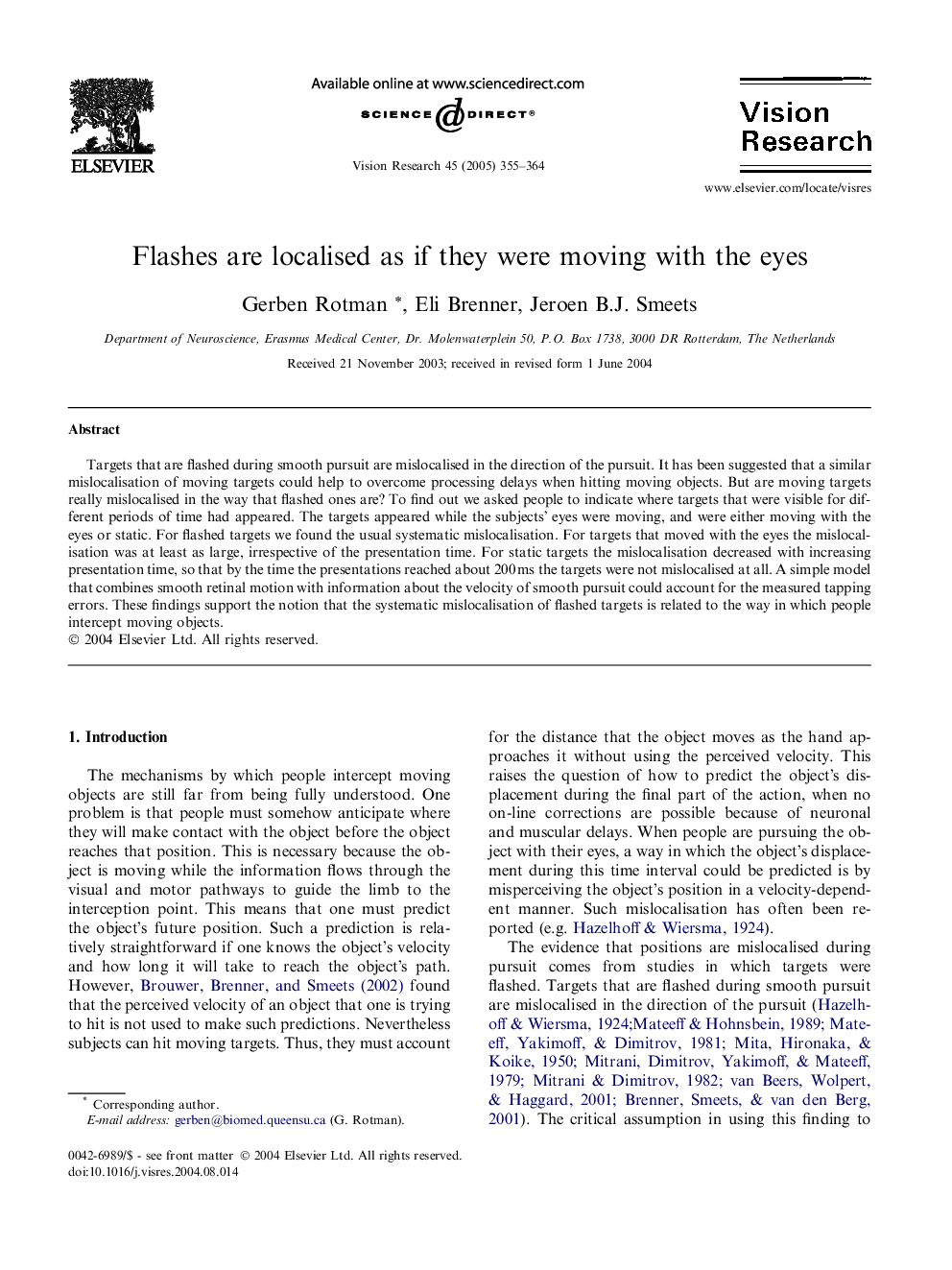| Article ID | Journal | Published Year | Pages | File Type |
|---|---|---|---|---|
| 9348847 | Vision Research | 2005 | 10 Pages |
Abstract
Targets that are flashed during smooth pursuit are mislocalised in the direction of the pursuit. It has been suggested that a similar mislocalisation of moving targets could help to overcome processing delays when hitting moving objects. But are moving targets really mislocalised in the way that flashed ones are? To find out we asked people to indicate where targets that were visible for different periods of time had appeared. The targets appeared while the subjects' eyes were moving, and were either moving with the eyes or static. For flashed targets we found the usual systematic mislocalisation. For targets that moved with the eyes the mislocalisation was at least as large, irrespective of the presentation time. For static targets the mislocalisation decreased with increasing presentation time, so that by the time the presentations reached about 200Â ms the targets were not mislocalised at all. A simple model that combines smooth retinal motion with information about the velocity of smooth pursuit could account for the measured tapping errors. These findings support the notion that the systematic mislocalisation of flashed targets is related to the way in which people intercept moving objects.
Related Topics
Life Sciences
Neuroscience
Sensory Systems
Authors
Gerben Rotman, Eli Brenner, Jeroen B.J. Smeets,
